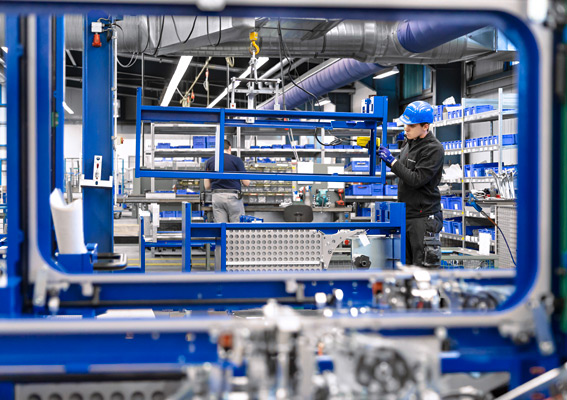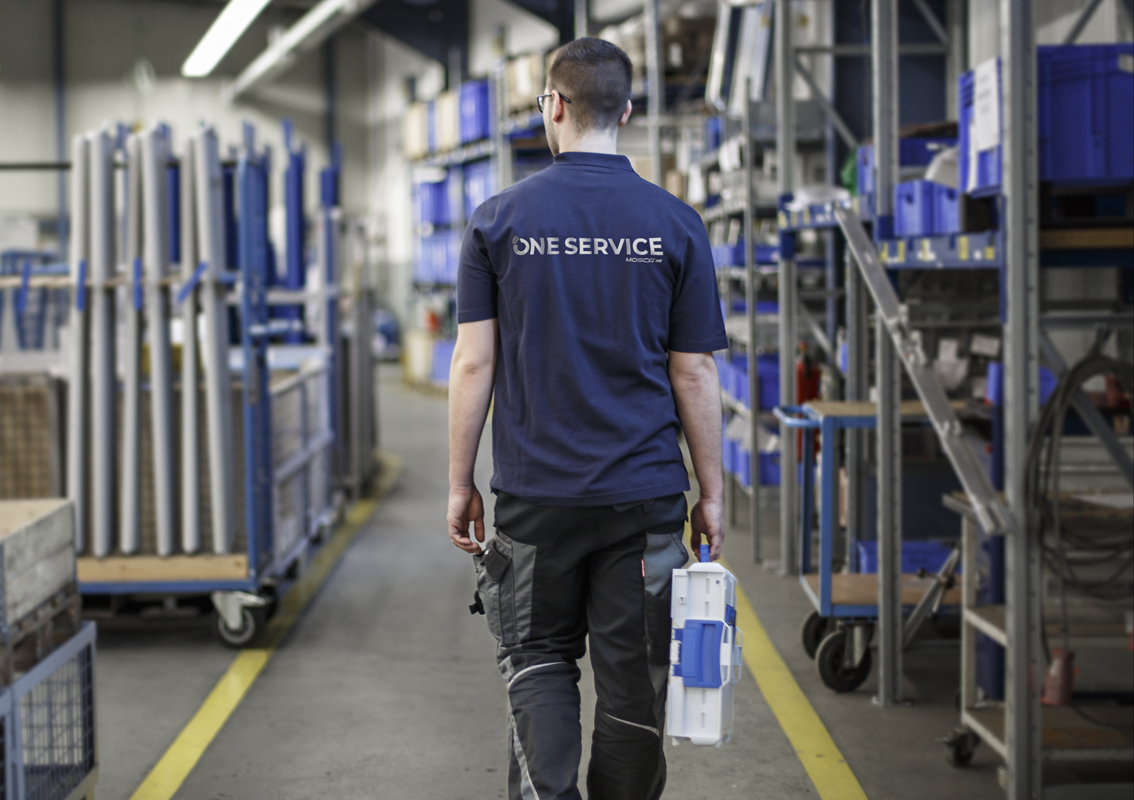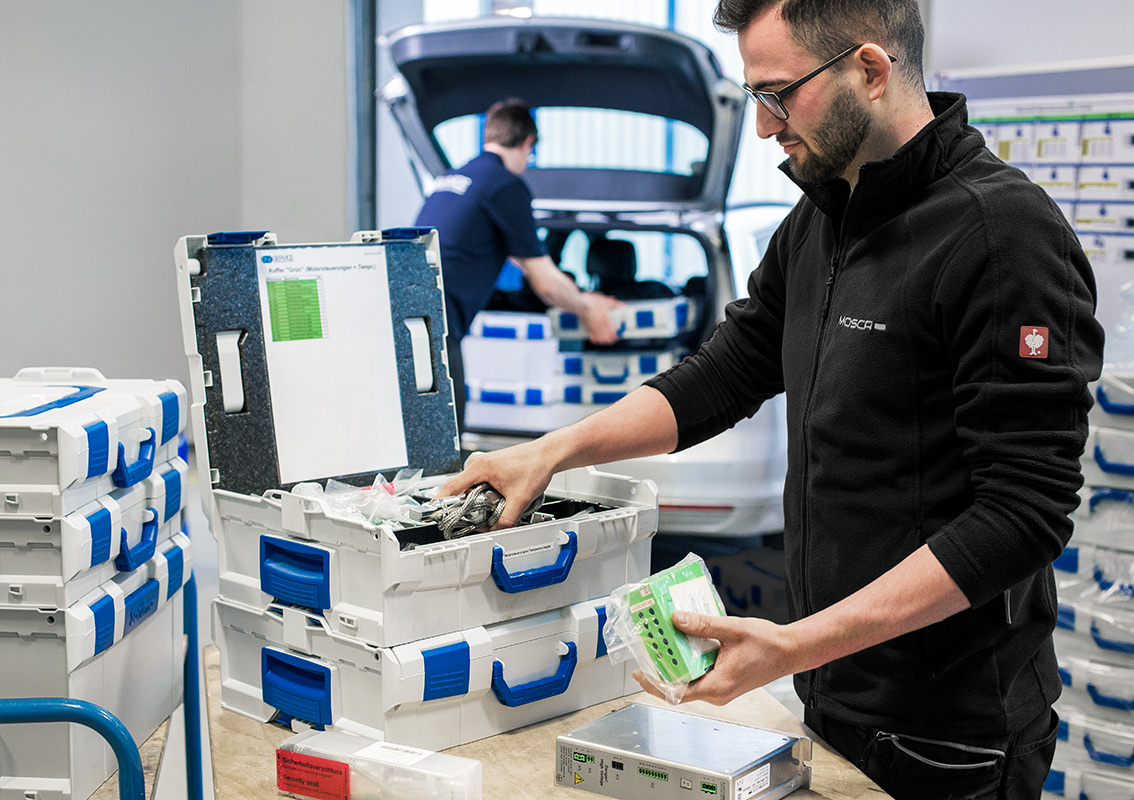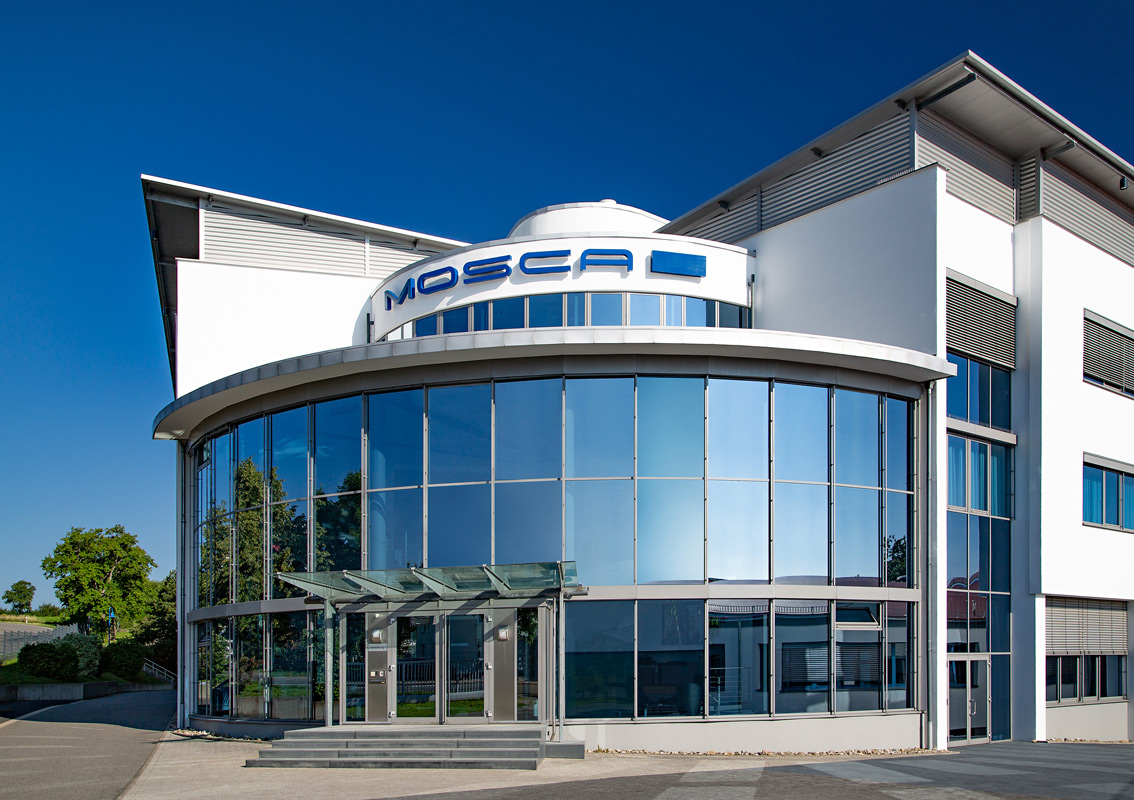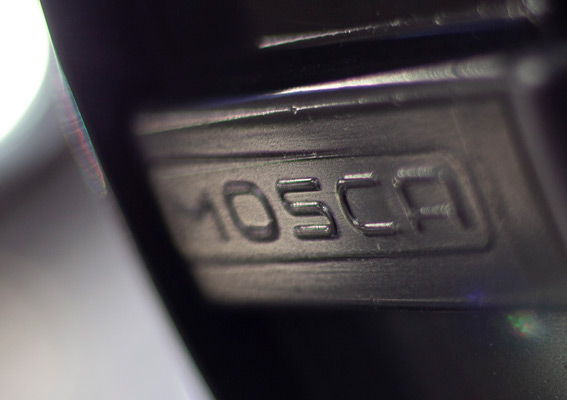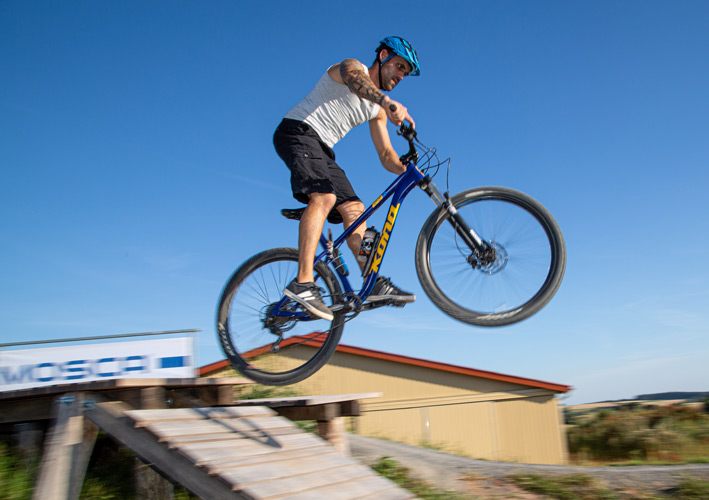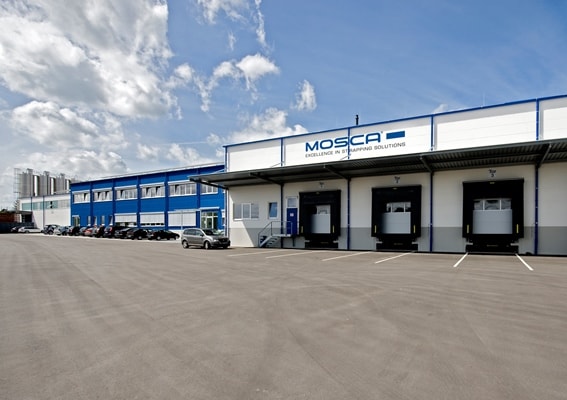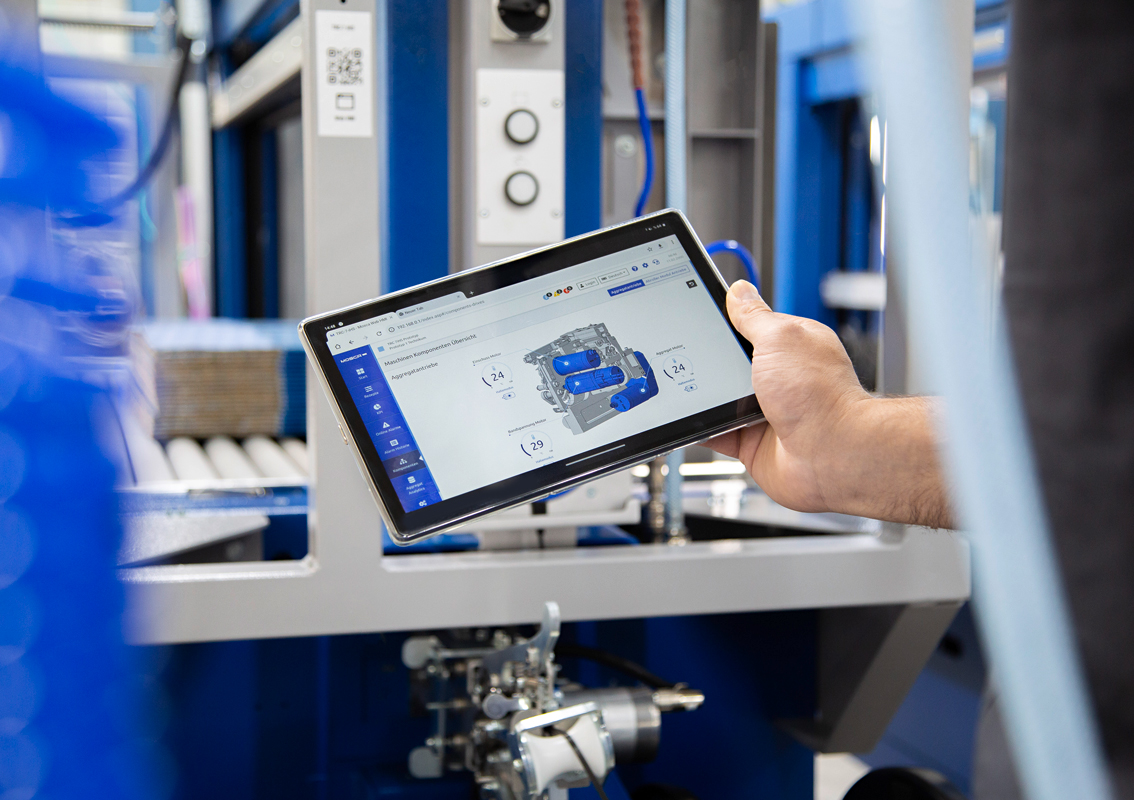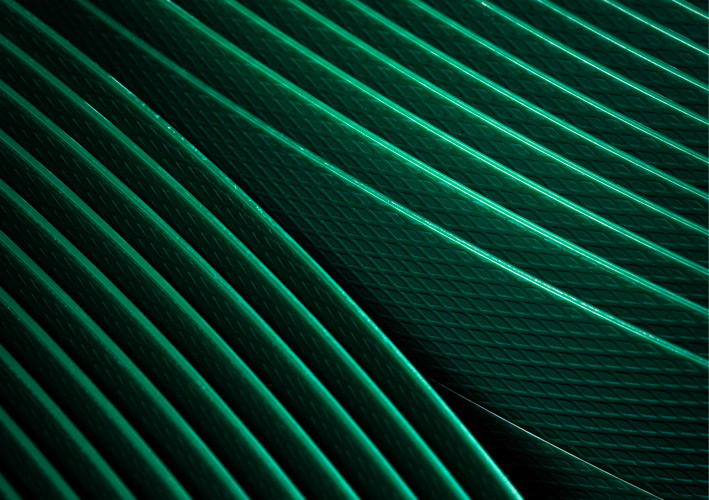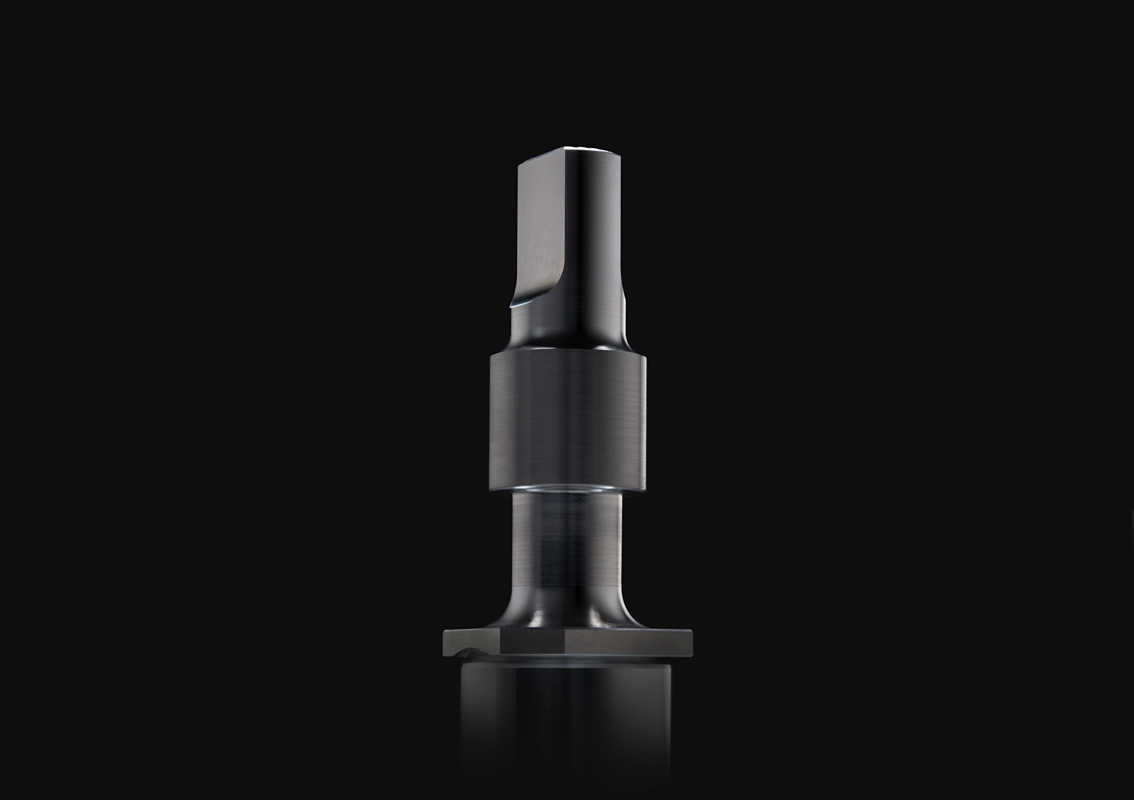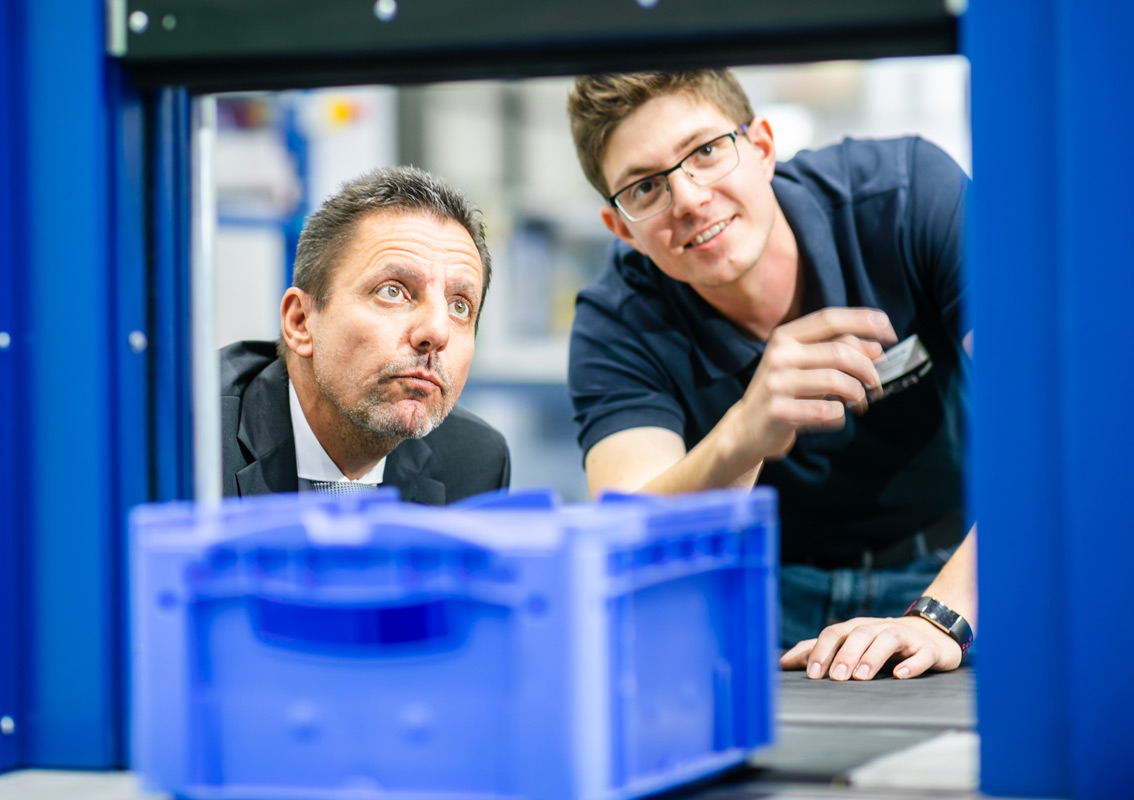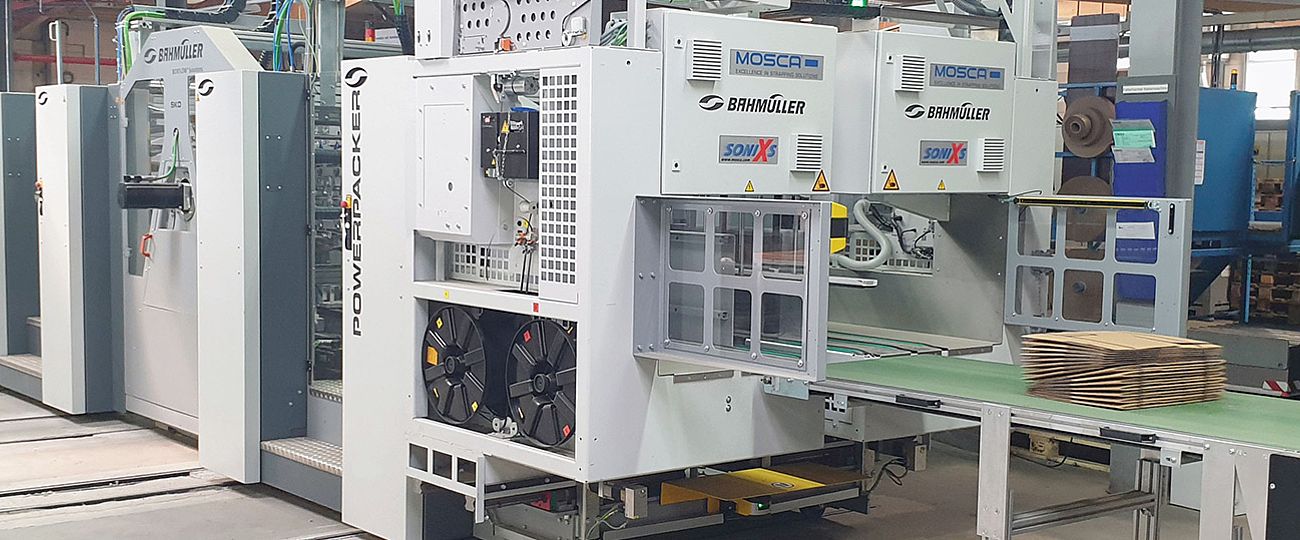-
Solutions
-
Application Solutions
- Application Solutions
-
Closing
-
Bundling
-
Handling Aid
-
Load Securing
-
Virtual Showroom
- Virtual Showroom
-
Intralogistics
-
Corrugated [NEW]
-
- Services
- Company
- Competences
- Mosca International
Productivity boost at Mayer Kartonagen: Fully automated end-of-line solution for the corrugated board industry
In corrugated board processing, the end of the packaging line faces special challenges. This is where sensitive products in a wide variety of formats need to be bundled at a high rate and secured for transport. When it came to developing the optimum solution for Mayer Kartonagen from Haiterbach, Germany, Bahmüller and MOSCA joined forces. Using the Powerpacker with SoniXs inline aggregates, the company has been able to achieve an output increase of between 20 and 35 percent.
Mayer Kartonagen in Haiterbach specializes in customized corrugated board packaging solutions. From compartment inserts to folding cartons and die-cut cartons, the plant in Germany’s Black Forest produces thousands of packages for a wide variety of products every day. These include corrugated cardboard packaging for engine and transmission parts and components from the medical technology sector, as well as foodstuffs. Since the cardboard packaging varies enormously depending on the industry, product and area of application, producing, bundling and securing it for transport is a major challenge.
Since 2015, a Jetbox folder gluer from Wilhelm Bahmüller Maschinenbau Präzisionswerkzeuge GmbH has been automatically closing and gluing the various carton types. At the end of the production line, however, physical workers were still needed until recently. They manually removed the cartons, separated and turned them, and then fed them to the bundling unit – a laborious and time-consuming process that limited the productivity of the line. This prevented the full capacity of the folder gluer from being exploited and large bundles were difficult to strap.
To optimize this process, Mayer Kartonagen called on two long-standing partners and specialists, namely Bahmüller and MOSCA. For more than a decade, the company has been sourcing its strapping machines from MOSCA GmbH, including several free-standing models for manual loading, a fully automated UATRI inline strapping machine, and a fully automated packing press with an ultrasonic unit for pallet strapping. Mayer Kartonagen has also enjoyed positive experiences with the Bahmüller folder gluer for more than five years.
Simple and efficient
The result of the collaboration was a state-of-the-art Powerpacker equipped with SoniXs inline units. Glued cartons are fed fully automatically from the folder gluer into the Powerpacker, sorted into packs, and finally strapped. This saves time and has given a new boost to productivity at Mayer Kartonagen. Depending on the number of items per package, the Powerpacker can strap between 7,800 and 13,000 cartons every hour, with a maximum output of 20,000 packages. This enables Mayer Kartonagen to achieve an increase in output of 20 to 35 percent, depending on the pack shape. Aziz Kaplan, Production & Technology Manager at Mayer Kartonagen, commented: “The Powerpacker with SoniXs ultrasonic technology represents a clear step into the future for our production line.”
The final step at the end of the packaging line is now as simple as it is efficient. All the operator has to do is specify the number of cartons per package and set the size of the boxes. The machine then takes over. The shingled stream of cartons is fed directly from the folder gluer to the power packer via a press belt, where sensors count off the boxes. As soon as the selected number has passed through, a separating belt divides the shingled stream into individual packs.
For packages with an automated base, the rotary module of the power packer then ensures homogeneity by rotating one part package by 180 degrees. These cartons fall onto the unrotated cartons in the collection chute and form a uniform package that can be easily stacked. From the chute module, the bundles are pushed into the strapping module, where MOSCA’s inline needling units are used. Depending on requirements, they strap the bundles either once or twice in parallel using five-millimeter-wide PP strapping. To ensure a continuous supply of strapping, the units are equipped with a double strap dispenser that automatically switches to the second strap coil as soon as the first one is empty.
SoniXs units used in inline strapping for the first time
The machine at Mayer Kartonagen is completely new and is the first Powerpacker to use MOSCA’s ultrasonic technology. While other strapping machines traditionally use heat to seal the strap material, the SoniXs unit developed by MOSCA uses ultrasonic technology. This not only avoids vapors, but also eliminates energy-intensive warm-up times.
This process had not been used in inline strapping machines before: “The aggregate used in inline strapping is significantly different from our other SoniXs aggregates”, explained Christian Zwieb, Sales Manager MOSCA Engineering at MOSCA. “In order to use SoniXs technology in the Powerpacker, we had to develop completely new aggregates that are mirror images of each other.” For strapping, a linear needle moves into the aggregate from above and picks up the strap. To seal it, the sonotrode then presses the strap ends together and welds them through ultrasonic vibrations.
With these new inline units, the Powerpacker is perfectly prepared for the various pack formats that Mayer Kartonagen requires. No matter whether the packages are very small or large display packs, with a minimum distance of only 100 millimeters between the two strapping units and a collection shaft height of 400 millimeters, packages of almost any size can be securely strapped and subsequently bundled.
Collaboration as a success factor
From the very beginning, it was clear to Mayer Kartonagen that they wanted to integrate MOSCA strapping units in the Powerpacker. Wherever possible, the company relies on MOSCA machines: “We have known MOSCA and Bahmüller for a long time as reliable partners with whom we have a family-like relationship”, Kaplan explained. “We’ve been very satisfied with both the quality of the machines and the fast service for many years.”
To make sure that the Powerpacker would work reliably with the new units right from the start, MOSCA and Bahmüller developed the machine in intensive cooperation – familiar territory for both companies: “We had already developed the first Powerpacker with the support of MOSCA and have been in discussion ever since”, said Christoph Gutmann, Product Manager Corrugated Board Converting at Bahmüller. When the shaft height needed to be increased by more than 40 percent for the fourth generation of the Powerpacker, Bahmüller turned to MOSCA once again. “Some strapping machines can’t handle the 400 mm height – MOSCA’s machines can”, Gutmann explained.
Once the development stage had been completed, Bahmüller tested the Powerpacker with MOSCA modules for four months in its own Innovation Center – also using products from Mayer Kartonagen. “We got the project up and running together from the very first hour: from concept to development to integration, we were always in communication with MOSCA and with Mayer Kartonagen”, said Gutmann. “This close cooperation between all three parties was definitely the key to success.”
Challenging installation pays off
In the summer of 2020, Mayer Kartonagen was finally able to install the Powerpacker – not an easy project during a pandemic. For the installation, Mayer Kartonagen had to relocate an entire line, with strictly separated work shifts. This made the installation the biggest challenge of the project for Mayer Kartonagen, but the technicians from the three companies worked together successfully to master it.
This challenging installation has paid off: “We are very satisfied with both the project process and the entire production line. The Powerpacker is stable and efficient”, Kaplan commented. “And after years of our employees having to carry out this last step in the packaging line by hand, much of this strenuous process is now taken off their hands. That’s a big relief for everyone.” To make it easier for them to switch to the Powerpacker after all this time, Bahmüller provides training for the operators at regular intervals.
Mayer Kartonagen is already eyeing further expansion of the line and is, for example, planning a fully automated material removal system. “We look forward to working with Bahmüller and MOSCA again in the future”, Kaplan concluded.
Mosca's road to the future!
 Mosca International
Mosca International
 America
America Asia
Asia Australia
Australia 中国
中国 Deutschland
Deutschland Suomi
Suomi France
France Great Britain
Great Britain Indonesia
Indonesia 日本
日本 Malaysia
Malaysia Nederland
Nederland Mexico
Mexico Polska
Polska España
España ประเทศไทย
ประเทศไทย Magyarország
Magyarország
